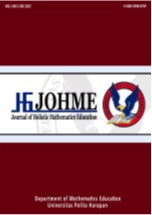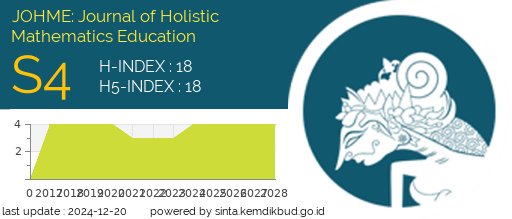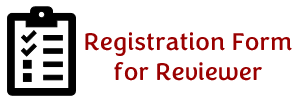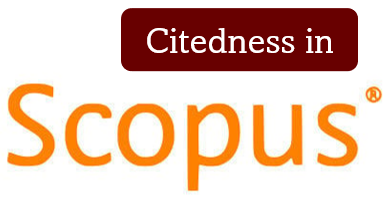THE ACTS OF ACADEMIC DISHONESTY IN A CHRISTIAN SCHOOL
DOI:
https://doi.org/10.19166/johme.v2i1.952Keywords:
academic dishonesty, academic integrity, PDCA, ketidakjujuran akademik, integritas akademikAbstract
The problem of academic dishonesty is a common problem in academia, but it is a serious problem that needs to be solved. Academic dishonesty, as the opposite of academic integrity, is the condition where students carryout their academic work (i.e., assignments and tests) dishonestly. From a Christian perspective, when students truly know Christ and have integrity in their lives, problems like academic dishonesty should not exist because students are supposed to live out their Christian values. In the brokenness of this world, these problems still happen even in Christian academic institutions. The purpose of this paper is to examine the factors causing academic dishonesty and other problems resulting from academic dishonesty, determine how to deal with acts of academic dishonesty, and suggest some ways to prevent academic dishonesty. To deal with academic dishonesty, the authors suggest some ways that are adapted from the PDCA (Plan-Do-Check-Action) theory, also known as The Deming Cycle. Ultimately, helping students act with academic integrity, instead of with academic dishonesty, requires the involvement of everyone in the school, including students and parents.
BAHASA INDONESIA ABSTRACT: Masalah ketidakjujuran akademik adalah masalah umum yang terjadi dalam bidang akademik, tapi masalah ini adalah masalah serius yang harus diselesaikan. Ketidakjujuran akademik adalah lawan dari integritas akademik yaitu kondisi ketika siswa mengerjakan berbagai aktivitas mereka di bidang akademik (seperti tugas dan ujian) secara tidak jujur. Dari perspektif Kristen, ketika siswa mengenal Kristus dan memiliki integritas dalam hidup mereka, masalah ketidakjujuran akademik seharusnya tidak pernah ada lagi dalam sekolah Kristen, karena siswa seharusnya hidup berdasarkan nilai tersebut. Kenyataannya dalam kejatuhan dunia ini, masalah ketidakjujuran akademik masih terjadi bahkan di institusi pendidikan Kristen. Kajian literatur ini memiliki tujuan untuk menguji berbagai faktor pernyebab masalah ketidakjujuran akademik, masalah lain akibat perbuatan ketidakjujuran akademik, bagaimana menangani masalah ketidakjujuran akademik, dan beberapa saran untuk mencegah masalah ketidakjujuran akademik. Untuk menangani masalah ketidakjujuran akademik, penulis menyarankan beberapa langkah yang diambil dari teori PDCA (Plan-Do-Check-Action) yang juga dikenal sebagai siklus Deming. Dari semuanya itu, mencegah kemungkinan yang membuat siswa melakukan tindakan ketidakjujuran akademik perlu dilakukan oleh guru, sekolah, dan semua orang yang terlibat dalam dunia akademik termasuk orang tua.
References
Cole, B. C., & Smith, D. L. (1996). Perceptions of business ethics: Students vs. business people. Journal of Business Ethics, 15(8), 869-896. DOI: https://doi.org/10.1007/bf00381856
Dahiya, R., & Sarita. (2015). Academic cheating among students: Pressure of parents and teachers. International Journal of Applied Research, 1(10), 793-797. Retrieved from http://www.allresearchjournal.com/archives/2015/vol1issue10/PartL/1-10-2.pdf
Eastman, J. K., Iyear, R., & Reisenwitz, T. H. (2008). The impact of unethical reasoning on different types of academic dishonesty: An exploratory study. Jornal of College Teaching & Learning, 5(12), 7-16. DOI: https://doi.org/10.19030/tlc.v5i12.1211
Eldin, Y. K. Z., & Ela, L. A. E. (2016). Implementing plagiarism awareness workshop to nursing faculty members, Damanhour University. Journal of Nursing Education and Practice, 7(1), 124-132. DOI: https://doi.org/10.5430/jnep.v7n1p124
Fox, K. H. (1988). Due process and student academic misconduct. American Business Law Journal, 25, 671-700. DOI: https://doi.org/10.1111/j.1744-1714.1987.tb01503.x
Gallant, T. B., & Drinan, P. (2006). Organizational theory and student cheating: Explanation, responses, and strategies. The Journal of Higher Education, 77(5), 839-860. DOI: https://doi.org/10.1080/00221546.2006.11778946
Geddes, K. A. (2011). Academic dishonesty among gifted and high-achieving students. Gifted Child Today, 34(2), 50-56. DOI: https://doi.org/10.1177/107621751103400214
Genereux, R. L., & McLeod, B. (1995). Circumstances surrounding cheating: A questionnaire study of college students. Research in Higher Education, 6(6), 687-704. DOI: https://doi.org/10.1007/bf02208251
Hawley, C. S. (1984). The thieves of academe: Plagiarism in the university system. Improving College and University Teaching, 32(1), 35-39. DOI: https://doi.org/10.1080/00193089.1984.10533838
Hidayat, D. (1997). Penggunaan kalkulator dalam pengajaran matematika sekolah dasar. Cakrawala Pendidikan, 16(1), 173 - 180. Retrieved from https://journal.uny.ac.id/index.php/cp/article/view/9245/pdf
Kessler, K. (2003). Helping high school students understand academic integrity. The English Journal, 92(6), 57-63. DOI: https://doi.org/10.2307/3650536
Levy, E. S., & Rakovski, C. C. (2006). Academic dishonesty: A zero tolerance professor and student registration choices. Research in Higher Education, 47(6), 735-754. DOI: https://doi.org/10.1007/s11162-006-9013-8
Macfarlane, B., Zhang, J., & Phun, A. (2012). Academic integrity: A review of the literature. Studies in Higher Education, 39(2), 339-358. DOI: https://doi.org/10.1080/03075079.2012.709495
McCabe, D. L., & Pavela, G. (2004). Ten (updated) principles of academic integrity: How faculty can foster student honesty. Change: The Magazine of Higher Learning, 36(3), 10-15. DOI: https://doi.org/10.1080/00091380409605574
McCabe, D. L., & Trevino, L. K. (1997). Individual and contextual influences on academic dishonesty: A multicampus investigation. Research in Higher Education, 38(3), 379-396. Retrieved from http://www.jstor.org/stable/40196302
McCabe, D. L., Trevino, L. K., & Butterfield, K. D. (2001). Dishonesty in academic environments: The influence of peer reporting requirements. The Journal of Higher Education, 72(1), 29-45. DOI: https://doi.org/10.2307/2649132
McCabe, D. L. (2001). Cheating: Why students do it and how we can help them stop. American Education, 25(4), 38-43. Retrieved from https://www.researchgate.net/publication/286354551_Cheating_Why_students_do_it_and_how_we_can_help_them_stop
McGuire, L., Lay, K., & Peters, J. (2009). Pedagogy of reflective writing in professional education. Journal of the Scholarship of Teaching and Learning, 9(1), 93-107. Retrieved from https://www.iupui.edu/~josotl/archive/vol_9/no_1/v9n1lay.pdf
Murdock, T. B., & Anderman, E. M. (2006). Motivational perspectives on student cheating: Toward an integrated model of academic dishonesty. Educational Psychologist, 41(3), 129-145. DOI: https://doi.org/10.1207/s15326985ep4103_1
Nuss, E. M. (1984). Comparing faculty and student attitudes. Improving College and University Teaching, 32(3), 140-144. Retrieved from http://www.jstor.org/stable/27565630
Palmer, P. J. (2007). The courage to teach: Exploring the inner landscape of a Teacher’s life. San Fransisco, CA: Wiley.
Rettinger, D. A., & Kramer, Y. (2009). Situational and personal causes of student cheating. Research in Higher Education, 50(2), 293-313. DOI: https://doi.org/10.1007/s11162-008-9116-5
Richard, W. D. (2003). Is technology contributing to academic dishonesty? Perspective on Physician Assistant Education, 14(3), 190-192. DOI: https://doi.org/10.1097/01367895-200314030-00036
Saana, S. B. B. M, Ablordeppey, E., Mensah, N. J., & Karikar, T. K. (2016). Academic dishonesty in higher education: Students’ perceptions and involvement in an African institution. BMC Research Notes, 9(234), 1-13. DOI: https://doi.org/10.1186/s13104-016-2044-0
Sallis, E. (2005). Total quality managamenet in education. London, UK: Taylor & Francis.
Schrimsher, R. H., Northrup, L. A., & Alverson, S. P. (2011). A survey of Stamford University students regarding plagiarism and academic misconduct. International Journal for Educational Integrity, 7(1), 3-17. Retrieved from https://www.ojs.unisa.edu.au/index.php/IJEI/article/view/740
Waithaka, A. G., & Gitimu, P. (2012). Academic dishonesty: Team effort against it; A review of literature. Journal of Academic and Business Ethics, 6, 1-7. Retrieved from http://www.aabri.com/manuscripts/121142.pdf
Williams, K., & Williams, C. (2011). Five key ingredients for improving student motivation. Research in Higher Education Journal, 11, 1-23. Retrieved from https://scholarsarchive.library.albany.edu/cgi/viewcontent.cgi?article=1000&context=math_fac_scholar
Downloads
Published
How to Cite
Issue
Section
License
Authors who publish with this journal agree to the following terms:
1) Authors retain copyright and grant the journal right of first publication with the work simultaneously licensed under a Creative Commons Attribution License (CC-BY-SA 4.0) that allows others to share the work with an acknowledgement of the work's authorship and initial publication in this journal.
2) Authors are able to enter into separate, additional contractual arrangements for the non-exclusive distribution of the journal's published version of the work (e.g., post it to an institutional repository or publish it in a book), with an acknowledgement of its initial publication in this journal.
3) Authors are permitted and encouraged to post their work online (e.g., in institutional repositories or on their website). The final published PDF should be used and bibliographic details that credit the publication in this journal should be included.”










